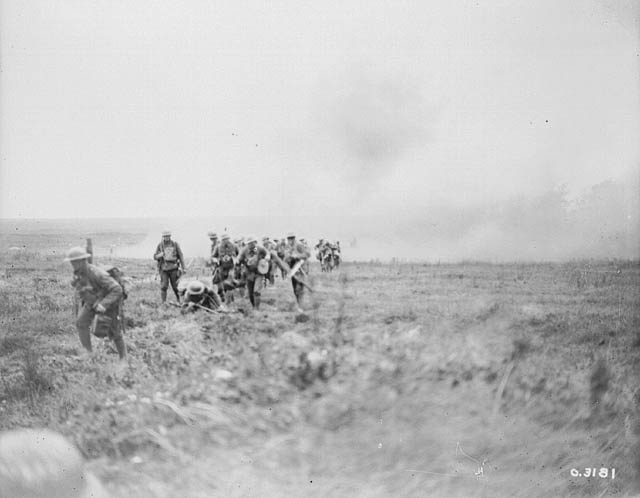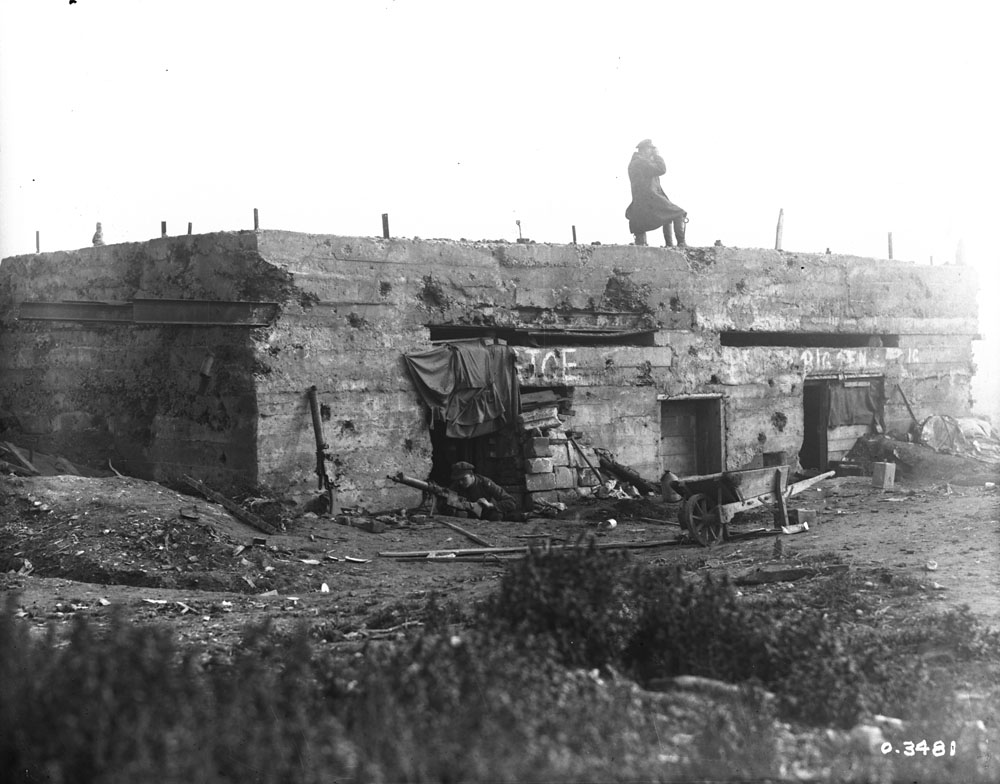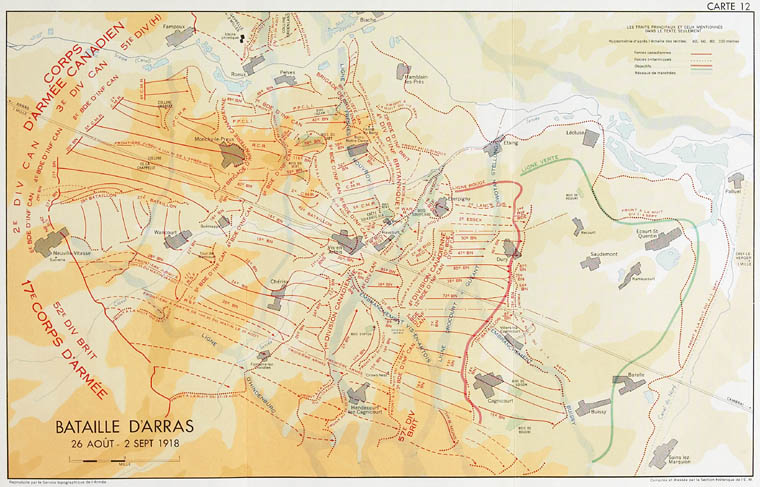The Second Battle of Arras, 26 August - 3 September 1918
After a successful push at Amiens in early August 1918, the Allies continued their offensive against the German army. The battles that took place between 26 August and 3 September 1918 (Battle of the Scarpe and Battle of Drocourt-Quéant) are known as the Second Battle of Arras.
The final objective of the Canadian Corps, at the time located in France on the road leading from Arras to Cambrai, was to take the Drocourt-Quéant Line, a major German defensive structure that included trenches, bunkers, machine gun posts and wire entanglements. Before they got to the line, the Canadian Corps (with the support of some British divisions) had to cross a series of entrenched defensive positions without the benefit of a territorial advantage or the element of surprise.
The assaults began at 0300 on 26 August under pouring rain. The infantry started off following a well-planned artillery barrage. With support from the British 51st (Highland) Division, the 2nd and 3rd Canadian Divisions were tasked with taking an enemy trench line (running north to south) between Neuville-Vitasse and the Canal de la Scarpe and then continue advancing to the village of Monchy-le-Preux. They were then ordered to push on as far as they could east of Monchy-le-Preux.
The 3rd Canadian Division took Monchy-le-Preux at 0740, while the 2nd Canadian Division captured the villages of Guémappe and Wancourt. Meanwhile, the Germans unsuccessfully attempted to retake Monchy-le-Preux. The Canadians were nonetheless unable to advance any further in the face of fierce enemy counter-attacks.
On 27 August, the objective of the 2nd and 3rd Canadian Divisions was to break the Fresnes-Rouvroy Line, the last major defensive system before the Drocourt-Quéant Line. Owing to enemy resistance from positions in front of the Fresnes-Rouvroy Line, which was strongly protected by machine gun nests and barbed wire, no units were able to make inroads through that day. Combat continued and the Canadians gradually were able to take the line in the next few days. In so doing, the Canadians captured 3,300 prisoners, 53 heavy guns and 519 machine guns.
After a few postponements, the assault on the Drocourt-Quéant Line was finally ordered for 2 September. In the previous days, the infantry had worked to improve its starting positions and fend off German counter-attacks, while the artillery focused on destroying as much of the enemy’s wire entanglements as possible between the Canadian Corps and its final objective.
At daybreak on 2 September, the 1st and 4th Canadian Divisions, with support from Mark V tanks and intense artillery fire, launched the attack. That morning, many Canadian battalions took their designated segments of the Drocourt-Quéant Line. By the end of a day of relentless battle, the Canadians had taken the line and the villages of Dury, Cagnicourt and Villez-sur-Cagnicourt, located beyond the Drocourt-Quéant Line, to the east. During the night of 2 to 3 September, the Germans retreated to the far bank of the Canal du Nord while destroying the bridges behind them. On 3 September, the Canadian Corps continued to advance, liberating villages on its way, without facing any resistance other than enemy artillery fire. At the end of their offensive, the Canadians controlled the territory west of the Canal du Nord, from the village of Sains-les-Marquion to the Sensée River.
The successful battle, praised by Lieutenant-General Arthur Currie in his diary, nevertheless came at a heavy cost. In the Second Battle of Arras, the Canadian Corps suffered 11,000 casualties, including killed, wounded and missing. Over 400 Canadians killed in combat between 26 August and 3 September 1918 have no known graves.
Based on a report submitted by an independent researcher and with the support of the Commonwealth War Graves Commission, the Casualty Identification Review Board of the Canadian Armed Forces has confirmed the identification of a previously unknown grave as being that of the following soldier:
Page details
- Date modified:


